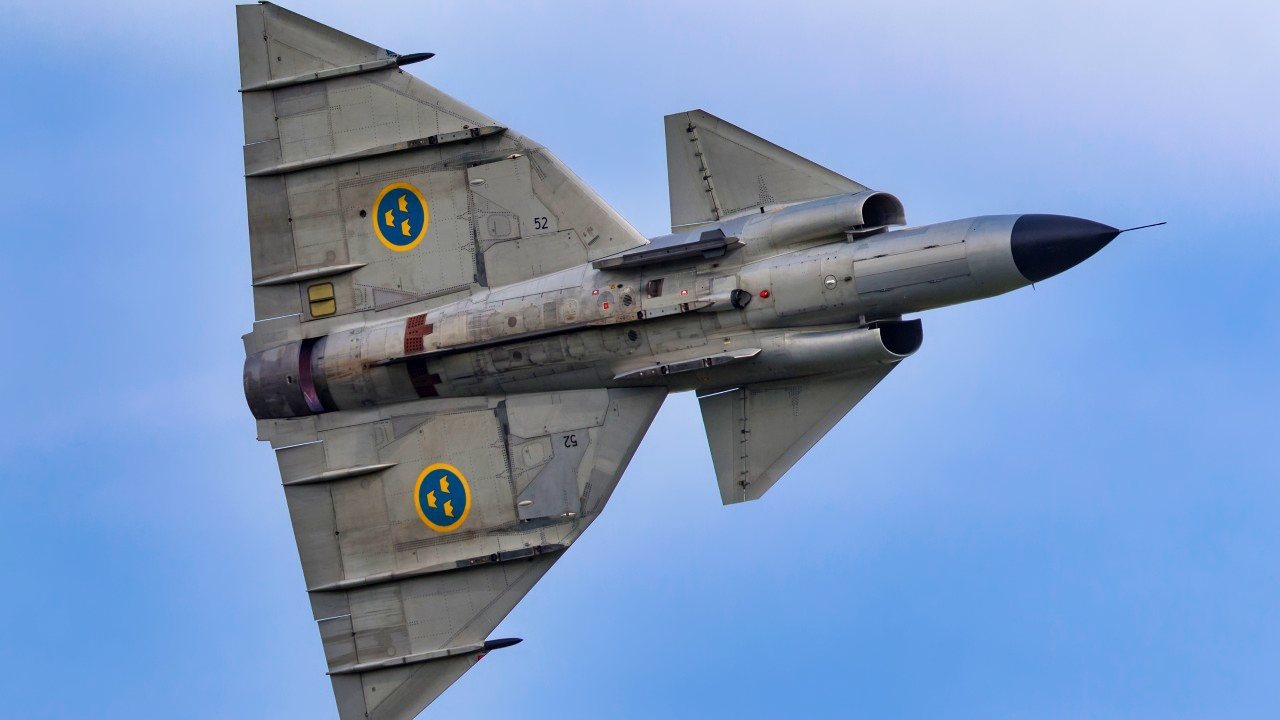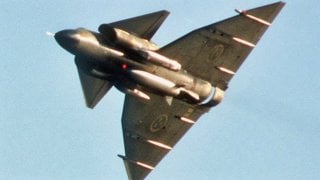The Saab 37 Viggen Fighter Was Built for a War with Russia in the Sky
The Saab 37 Viggen, named after the Norse god Thor's "Thunderbolt," was Sweden's Cold War response to the Soviet Union's expanding fighter fleet.
Summary: The Saab 37 Viggen, named after the Norse god Thor's "Thunderbolt," was Sweden's Cold War response to the Soviet Union's expanding fighter fleet.
Initially conceptualized in the 1950s to replace the Saab 32 Lansen and Saab 35 Draken, the Viggen was developed under a unique Swedish defense strategy using the Bas-60 system, allowing for dispersal across numerous small bases.
This fighter featured innovative STOL capabilities, advanced avionics without a human navigator, and was powered by a licensed variant of the Pratt & Whitney JT8D engine, reaching speeds up to Mach-2.1. While it led as Europe's fastest fighter until the Tornado's introduction in 1981, the Viggen was gradually phased out by the newer Saab JAS 39 Gripen by the early 2000s.
Exploring the Legacy of the Saab 37 Viggen, Sweden's Iconic Fighter
Initially designed to counter the Soviet’s growing fleet of fighter jets during the Cold War, the Saab 37 Viggen represented Sweden’s homegrown manufacturing capabilities when first introduced.
Translated to “Thunderbolt,” the Viggen was named in part to reference the three-forced lightning produced from the hammer of Thor.
Many of the Western fighters created prior to the collapse of the Soviet Union derived from North Atlantic Treaty Organization (NATO) allies.
Stockholm, however, also saw the need to beef up its military to protect against the growing Soviet threat with its creation of the Saab 37 Viggen.
The history of the Saab 37 Viggen:
In the 1950’s, the Viggen was first conceptualized as a replacement platform for the Saab 32 Lansen and Saab 35 Draken fighter. While the Draken was widely considered to be one of the most advanced airframes to fly at the time, Swedish officials desired a next-level successor that could lead the way for future combat platforms.
During the research and design phase, over 100 different concepts were examined by aircraft designers. Swedish planners ultimately adopted the Bas-60 system for its aerial fleet, planning to disperse the platforms to an array of small bases to minimize the loss of many of them in a potential Soviet first strike.
Specs & capabilities:
The Viggen had to accommodate short take-off and landing (STOL) capabilities in order to be capable of deploying to small bases - especially those with damaged runways or other unconventional landing pads.
The single-seat fighter also featured cutting-edge avionics, including a central computer and heads up-display instead of the typical human navigator. At first, manufacturer Saab planned to power the Viggen with one Rolls-Royce Medway engine.
However, the Medway was eventually canceled and Saab ended up licensing a modified variant of the Pratt & Whitney JT8D engine instead. The Viggen was able to reach a top speed of Mach-2.1 (times the speed of sound), a maximum range of 2,000km with internal fuel and a service ceiling of 18,000 meters with these engines.
Notably, the Viggen represented the first aircraft to be equipped with both an afterburner and thrust-reverser-components later adapted in the Concorde commercial airliner. Until the introduction of the Tornado aircraft in 1981, the Viggen also had the distinction of being the fastest European fighter for a decade.

Where are the Saab 37 Viggens today?
Several Saab 37 variants emerged over the years, all sporting enhancements to retain an edge over competitor platforms. These included the AJ37 – strike fighter, SH37 – maritime patrol/anti-ship, SF37 – reconnaissance, and the Sk37 – two-seat trainer. Despite these subsequent innovations, the Viggen platform was never exported (and also never saw much combat action).

Stockholm originally planned to produce around 800 of these fighters, but high costs brought this number down significantly. These Saab airframes began to be removed from service in the mid-1990s upon the arrival of the newer Saab JAS 39 Gripen. The last Viggen was officially relegated to retirement in the early 2000s.
About the Author: Maya Carlin
Maya Carlin, National Security Writer with The National Interest, is an analyst with the Center for Security Policy and a former Anna Sobol Levy Fellow at IDC Herzliya in Israel. She has by-lines in many publications, including The National Interest, Jerusalem Post, and Times of Israel. You can follow her on Twitter: @MayaCarlin.
All images are Creative Commons.


